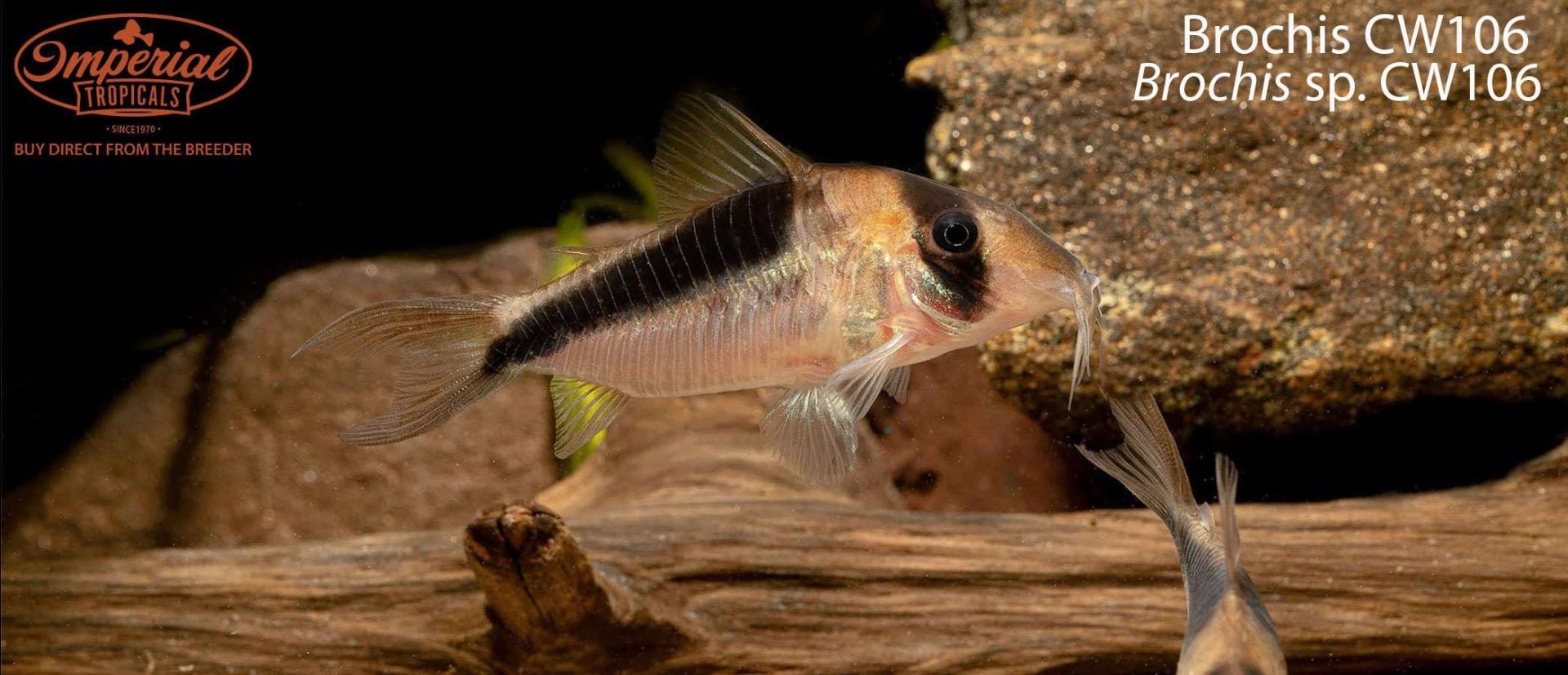
Remarks: Brochis CW106 is a medium sized Brochis that has yet to receive an official scientific name. They come from the Rio Vaupes in Colombia and are fairly new to the hobby making them rather challenging to acquire. This species is very similar to Brochis CW107 with the main visible difference between the two being that Brochis CW106 has a longer snout compared to Brochis CW107. Both display faded orange coloration on their heads, a black "mask," and a thick black dorsal stripe that stretches from the front of the dorsal fin down to the bottom of the caudal fin.
It was previously classified as Corydoras sp. CW106, but was reclassified as Brochis sp. CW106 upon publication of a phylogenomic analysis in 2024 that reclassified many species in the Corydoradinae subfamily.
Corydoradinae are small, peaceful catfish that are active shoalers and will stay near conspecifics, making for a lovely sight. They feed by searching through sand with their barbels, making such a substrate necessary for their long-term health. Gravel substrates tend to be abrasive and damage the barbels, leading to infections and an inability to find food.
While these friendly catfish are willing to swim with other species of Corydoradinae different from their own, this does not provide the same social need as being kept with members of their own species. Because of this, it is highly recommended to keep at least six of each species of Corydoradinae present in the aquarium and only mix species if one has the space to keep at least six of each.
Corydoradinae are often looked at as "scavengers," but they should be treated in a similar fashion as the rest of your fish. They are omnivores and require a mixed diet. Sinking prepared foods are readily accepted, as are frozen and live foods such as brine shrimp, blackworms, and bloodworms.